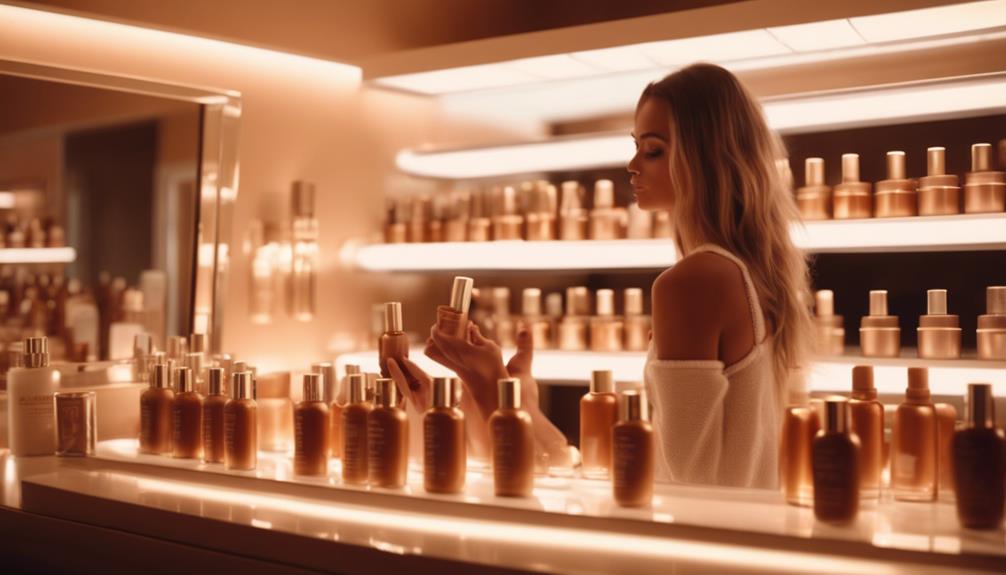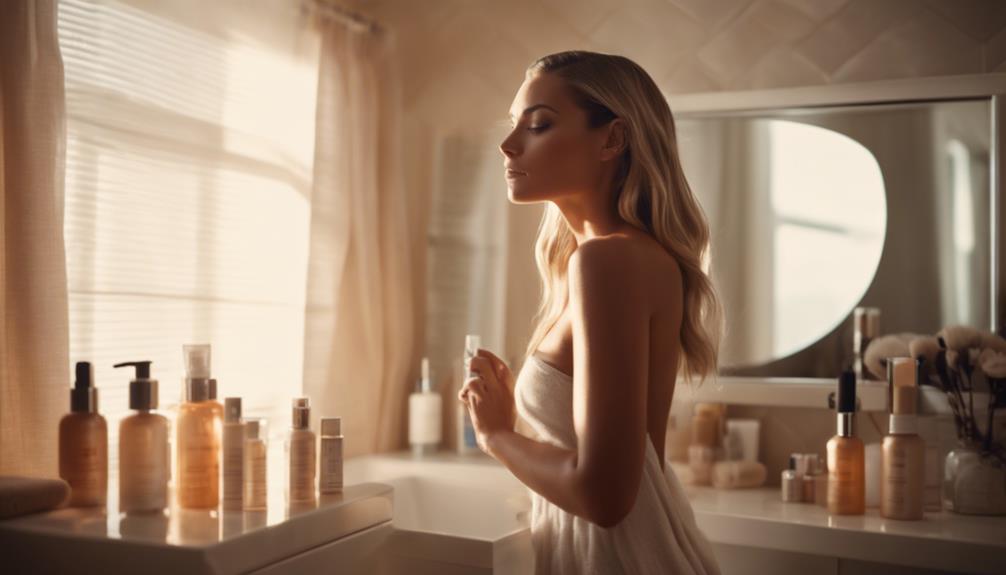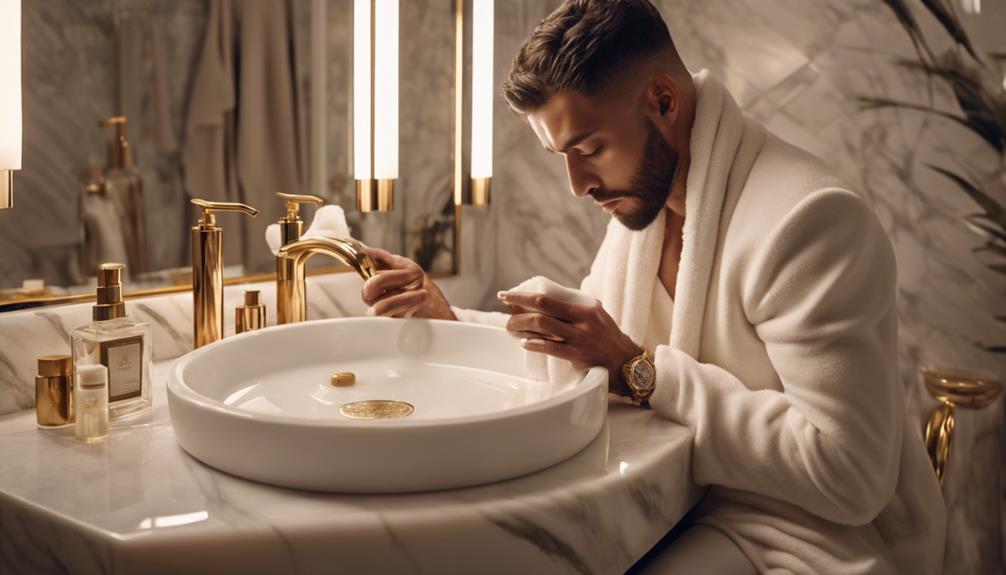When entering a tanning bed, safety should always come first! Begin by determining your skin type—fair skin is more prone to burning, so start off slowly with just a few minutes. Next, choose the right bronzer; opt for a hydrating one with SPF for added protection. Don’t forget to wear protective gear, such as goggles for your eyes and stickers for sensitive areas. Staying hydrated is also key; make sure to drink water during your session to keep your skin healthy and glowing. By following these tips, you’ll be on your way to a safe and fabulous tan; seeking advice from professionals can lead to even more helpful tips! Be sure to adhere to the recommended time limits based on your skin type and never exceed them. Keeping the tanning bed clean is equally important for safe use, so inquire about the cleaning procedures from the staff. By taking these precautions, you can achieve a beautiful, sun-kissed glow without compromising your skin’s well-being. Safe tanning bed use is achievable with proper knowledge and preparation. Safe tanning bed use is possible with the right knowledge and preparation. Always remember to listen to your skin and watch for any signs of irritation or overexposure, adjusting your sessions accordingly. Combining these steps with safe tanning bed practices ensures that you not only achieve a radiant glow but also protect your skin from unnecessary risks. With a consistent approach and mindful habits, you can enjoy the benefits of a tanning bed while prioritizing your health and safety.
Key Takeaways
- Determine your skin type to establish safe tanning session durations and avoid burns.
- Start with short sessions: 3-5 minutes for fair skin, gradually increasing based on skin response.
- Choose a bronzer that matches your skin tone and contains SPF for added protection.
- Use protective gear like eyewear and tanning bed stickers to shield sensitive areas from UV exposure.
Determine Your Skin Type
Understanding your skin type is essential for making informed decisions about safe tanning practices.
Think of your skin as a unique canvas—some are like delicate pastels, while others are bold and vibrant.
If you've got fair skin, you might burn faster than a marshmallow at a campfire, so you'll want to be extra cautious!
On the other hand, if your skin has more melanin, it's like having a natural sunscreen.
But remember, if you have a history of skin issues or you're unsure, chatting with a dermatologist is a smart move.
Your skin knows what it needs, so pay attention!
Are you ready to discover what your skin's telling you? Let's plunge into this tanning adventure together!
Establish Time Limits

Knowing your skin type helps you set appropriate time limits for tanning sessions to avoid overexposure and protect your skin.
If you're fair-skinned, start with just 3 to 5 minutes—think of it as dipping your toes in a pool rather than diving in!
For medium skin, aim for 5 to 7 minutes, while those with darker skin can go for 7 to 10 minutes.
But remember, it's not a race; you can gradually increase your time based on how your skin reacts. Always listen to your skin!
Using a timer can help keep you on track, just like when you're baking cookies—too much time can ruin the batch!
Select the Right Bronzer
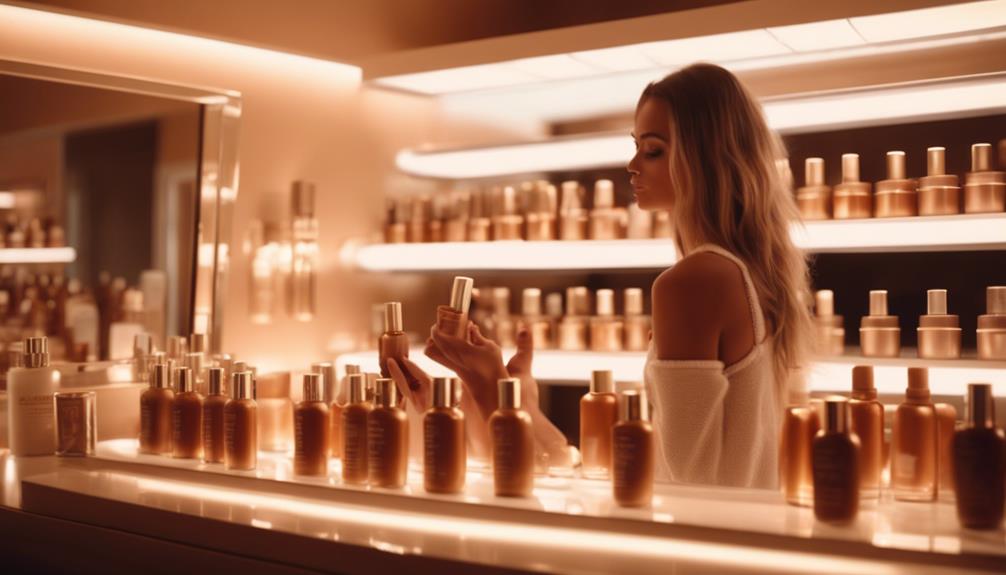
Choosing the right bronzer can enhance your tanning experience and give your skin a natural, radiant glow. Imagine stepping out of the tanning bed, looking like you just returned from a tropical vacation!
To achieve that, pick a bronzer lotion that matches your skin tone—think of it as finding the perfect outfit. You want something hydrating, too, because nobody likes dry skin, right? Plus, make sure it has SPF protection to keep your skin safe from UV rays.
Look for formulas that spread evenly without streaks—like painting a masterpiece on your canvas! So, next time you shop for bronzer, remember these tips, and you'll be on your way to a gorgeous tan that'll make heads turn!
Use Protective Gear

Wearing protective gear during tanning sessions is essential to safeguard your skin from harmful UV exposure. Think of it like wearing a helmet when riding your bike; it just makes sense!
You should always use protective eyewear to shield your eyes from those intense rays. It's like giving your peepers a cozy pair of sunglasses, making your tanning experience comfy and safe.
Also, consider using a tanning bed sticker to cover those sensitive spots, preventing any unwanted burns. Trust me, your skin will thank you later!
Stay Hydrated During Sessions
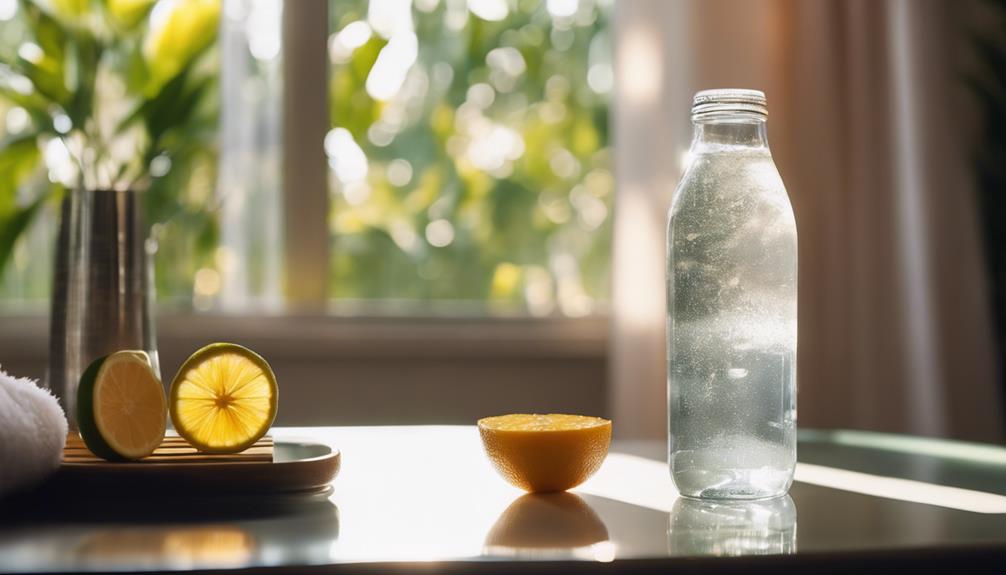
Staying hydrated during tanning sessions is essential for maintaining your skin's health and enhancing your tanning results.
Think of your skin like a plant; just as it needs water to thrive, your skin craves hydration, especially when exposed to UV rays. So, grab a water bottle and sip regularly!
It'll help keep your skin supple and glowing. Plus, staying hydrated can make your tanning experience more enjoyable—who doesn't love a revitalizing drink?
Just imagine basking in warmth, feeling relaxed, and knowing you're taking care of your skin.
And remember, the better you hydrate, the better your tan will look! So, next time you hit the tanning bed, don't forget your water; your skin will thank you!
Frequently Asked Questions
How Often Should I Use Tanning Beds for Safe Results?
You should use tanning beds sparingly, starting with once a week. Gradually increase frequency based on your skin's response, but always monitor for signs of overexposure to maintain healthy skin and avoid damage.
Can I Tan if I Have Tattoos or Piercings?
You can certainly bask in the glow of a tanning bed, but remember, tattoos and piercings might require extra care. Cover them well to protect your art and guarantee a smooth, even tan.
What Should I Do if I Experience Skin Irritation?
If you experience skin irritation, stop tanning immediately. Rinse the area with cool water, apply a soothing lotion, and avoid further exposure until healed. If irritation persists, consult a dermatologist for professional advice and treatment.
Are There Any Specific Vitamins to Take for Better Tanning Results?
Think of vitamins as sunlight for your skin's inner glow. You might consider taking Vitamin D, E, and beta-carotene; they can enhance your tanning results, promoting a radiant complexion while nourishing your skin from within.
How Can I Tell if My Bronzer Lotion Has Expired?
To tell if your bronzer lotion's expired, check for changes in color, smell, or texture. If it looks separated or has an unusual odor, it's best to toss it and get a fresh bottle.
Conclusion
So, there you have it! Tanning bed safety is just as important as getting that gorgeous glow, like how a superhero needs their cape—it's all about protecting yourself!
By knowing your skin type, sticking to time limits, choosing the right bronzer, wearing protective gear, and staying hydrated, you can enjoy your tanning sessions without worry.
Remember, a little preparation goes a long way!
Now, are you ready to shine bright while keeping your skin happy and healthy?
